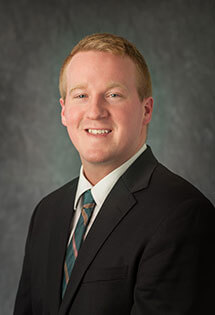

Five Pillars to Managing Longevity
Erik Nelson, Wealth Management Associate | Carolyn Taylor, Founding Partner, President | October 27, 2016
As technology has advanced and improvements in diet, medicine and education have grown, one trend that is very apparent is that people are living longer. While this fact can almost certainly be viewed as a positive, increasing longevity may also create financial, lifestyle and family relationship strains as retirees must find the means and methods to satisfy an extended life expectancy.
To help combat these potential issues, we have addressed the 5 common pillars of dealing with the challenges of managing longevity.
Managing End of Career:
For many people, retirement is seen as the light at the end of the tunnel and something that they have been working towards for decades. However for some, when the time comes to hang up the working boots, they have trouble filling both the emotional connection and the time commitment that a 40 plus hour work week brings. While no one truly knows how they will respond to the lifestyle that retirement brings until that time comes, managing the end of your career can produce benefits in many ways by exploring options such as:
- Consulting or part-time work
- Allows you to contribute to a Self-Employed 401(k) and continue to save tax-deferred money
- Part-time teaching or taking part-time courses
- Volunteer opportunities
- Student mentoring
- Participation on local boards and committees
By reaching out to those in your network who are participating in these activities or approaching local universities and groups for existing opportunities, you can explore potential opportunities for yourself post-retirement should the desire or need arise.
Financial Assets and Efficiency:
As people enter retirement, they begin to withdraw their assets rather than add to them. When there is a steady, defined income flow from employment, it can be much easier to mentally compartmentalize what is being spent and often times the habit becomes to spend what you net. While this mindset can suffice if there is a fixed income, it can create a habit of living without a budget, making it difficult for retirees to develop an understanding of what they actually need for living expenses. This can result in assets can be inappropriately drawn down and potentially prematurely exhausted. To better manage your financial assets and cash flow, the steps below can be helpful:
- Establish a budget for a proper understanding of the expense level needed to support your desired lifestyle.
- Explore what sources are available to fund those expenses. Visit Weatherly’s Research tab above to view Mint.com, which can be an effective tool to consolidate all of your accounts and track budgets.
- Understand how you can leverage different types of accounts in combination with other income sources to produce a more tax efficient cash flow.
- Strategically withdraw needed funds to help make your money last longer.
- Pair higher income years with tax-free withdrawals, lower income years with tax-deferred withdrawals or a combination of the two to help create a more consistent and predictable level of taxable income. Click here for the 2016 tax brackets.
As retirement needs and income become more apparent, decisions relating to when to claim Social Security benefits, management of Required Minimum Distributions (RMDs) and potential use of debt can be managed in a tax efficient manner.
Quality of Life:
A successful retirement is not solely determined by finances but also greatly by the quality of the lifestyle. While it may seem that quality of life is largely dictated by what is financially practical, developing a proper expectation of your desired retirement lifestyle can be just as impactful. Common goals often include:
- Family time
- Travel
- Charitable giving
- Intra-family gifting
- Minimization of the noise and complexities of life
Weatherly can assist with developing a financial evaluation to help determine whether the quality of life that you strive for is consistent with the quality of life that is financially sustainable given your life expectancy, typically into the mid 90s.. Not only will this exercise bring you through the critical thought process of developing a retirement bucket-list, it can also help to the relieve the stresses that accompany uncertainty or unrealistic expectations.
Health and Healthcare Cost Management:
It’s not hard to see the positives of increasing longevity, with more time with loved ones, to live your dreams and goals and to enjoy the simplicities of life. However, the ability to pursue these things and live your desired quality of life is driven largely by how retirees manage both their health and the related expenses.
While the expected total lifetime cost of retirement healthcare expenses can vary greatly from study to study, commonly ranging from $260,000 to $464,000, the conclusion is the same; healthcare costs represent one of the largest expenses in retirement. The large potential outlay and uncertainty of the size of that outlay is only compounded by the fact that U.S. healthcare costs have been rising at a much faster rate than the annual inflation rate and by as much as 50% according to retirement healthcare planning firm HealthView Services. The big question is how to manage these costs using the most cost effective, tax efficient methods. Common solutions include one of or a combination of:
- Continuing to work longer
- Delaying the period which assets are withdrawn
- Health Savings Account (HSA)
- Click here to find out if you are eligible to for an HSA and which expenses are considered qualified medical expenses that HSAs can cover
- Insurance policies with a Long Term Care Benefit option or Accelerate Death Benefit (ADB) rider
Regardless of which option or options you pursue, it is important to account for these potential expenses and conduct annual checkups to help maintain your health. It is also important to relay your family’s longevity history to your advisors and professionals so that they can be aware of this information and factor corresponding needs and considerations into your financial picture.
Family Conversations:
The end of life stage is something that no one wants to think about as it’s difficult to contemplate your own mortality just as it is for your children and loved ones to do so. However, having the appropriate family conversations and taking certain necessary actions will not only help manage the end stage of life but also help to alleviate some of the stresses that your loved ones may experience after your passing.
For many families, finances is one of the few topics that is considered off limits. However, as you, and your children and loved ones age, the importance of financial discussions becomes greater. A recent study conducted by wealth transfer firm The Williams Group found that nearly 70% of families lost control or experienced strain in their relationships after a wealth transfer event; the most common source being a lack of communication. Without having to specifically mentioning the details of your finances, you can help reduce this lack of communication by:
- Relaying a broad overview of the types and locations of your assets
- Outlining where assets are held
- Communicating any potential charitable intentions
- Establishing a list of who to contact and where personal information is kept
- Introducing potential inheritors to your financial and legal professionals
These family conversations can be very helpful in the handling the procedure of wealth transfer, but communication is not the only necessity. As detailed in Weatherly’s previous blog post on estate planning, regardless of asset size and complexity, there are additional legal procedures and documentation that should be part of any estate plan.
Managing longevity is by no means done overnight, but by considering these 5 pillars, you can help to ease both your own experience and the experience of your loved ones. We encourage all to reach out to Weatherly and their other trusted professionals to see how they can potentially further manage their longevity.
Links for further reading:
http://www.jackolg.com/considerationsforservingagingclients.pdf
** The information provided should not be interpreted as a recommendation, no aspects of your individual financial situation were considered. Always consult a financial professional before implementing any strategies derived from the information above.




